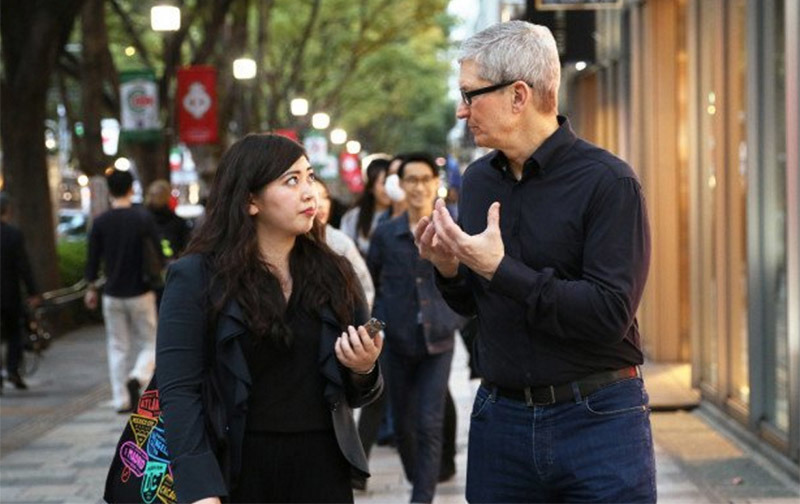Apple CEO Tim Cook again touts benefits of AR over VR, says 'no substitute for human contact'
Apple CEO Tim Cook speaks to BuzzFeed Japan reporter Eimi Yamamitsu. | Source: BuzzFeed Japan via Twitter

In an interview published Thursday, Apple CEO Tim Cook reaffirmed his company's stance on augmented reality, saying the technology's ability to amplify human experiences makes it more likely to succeed as compared to virtual reality.
Speaking to BuzzFeed News, Cook once again reiterated the company's bullish position on AR. While the publication was unable to suss out details on future plans, it did nab a soundbite that sheds a bit of light onto the company's thinking.
"There's no substitute for human contact," Cook said. "And so you want the technology to encourage that."
Since first broaching the subject during a quarterly investors conference call in July, Cook has repeated the same refrain when asked about a potential Apple branded AR/VR offering.
"We have been and continue to invest a lot in this," Cook said in July. "We are high on AR for the long run, we think there's great things for customers and a great commercial opportunity. So we're investing."
The Apple chief expanded on the topic in today's interview using expectedly vague terms.
"VR, I think, has some interesting applications, but I don't think it's a broad-based technology like AR," Cook told BuzzFeed News. "Augmented reality will take some time to get right, but I do think that it's profound. We might ... have a more productive conversation, if both of us have an AR experience standing here, right? And so I think that things like these are better when they're incorporated without becoming a barrier to our talking. [...] You want the technology to amplify it, not to be a barrier."
The comments are basically an abridged version of those offered to major media outlets in recent weeks. Cook said the same thing, using interchangeable verbiage, in August, September and, most recently, two weeks ago at the Utah Tech Tour hosted by Sen. Orrin Hatch.
Distilled down to its most basic elements, augmented reality can be thought of as a layer of digital information overlaid onto the physical world. Advanced versions of the immersive technology use specialized transparent displays, though developers working within contemporary hardware constraints have created effective analogs using smartphone cameras and displays. Niantic's hit Pokémon Go app for iOS is one such example.
Though Apple has yet to outline an official AR strategy, the company is making strategic AR segment purchases like last year's acquisition of motion capture specialist Faceshift and German AR firm Metaio. The company is also developing supporting tech in-house, as evidence by a growing portfolio of AR/VR patents like transparent displays, iPhone-powered virtual reality systems, advanced computer vision tech and more.
 Mikey Campbell
Mikey Campbell










 Malcolm Owen
Malcolm Owen
 William Gallagher and Mike Wuerthele
William Gallagher and Mike Wuerthele
 Christine McKee
Christine McKee
 William Gallagher
William Gallagher

 Marko Zivkovic
Marko Zivkovic









